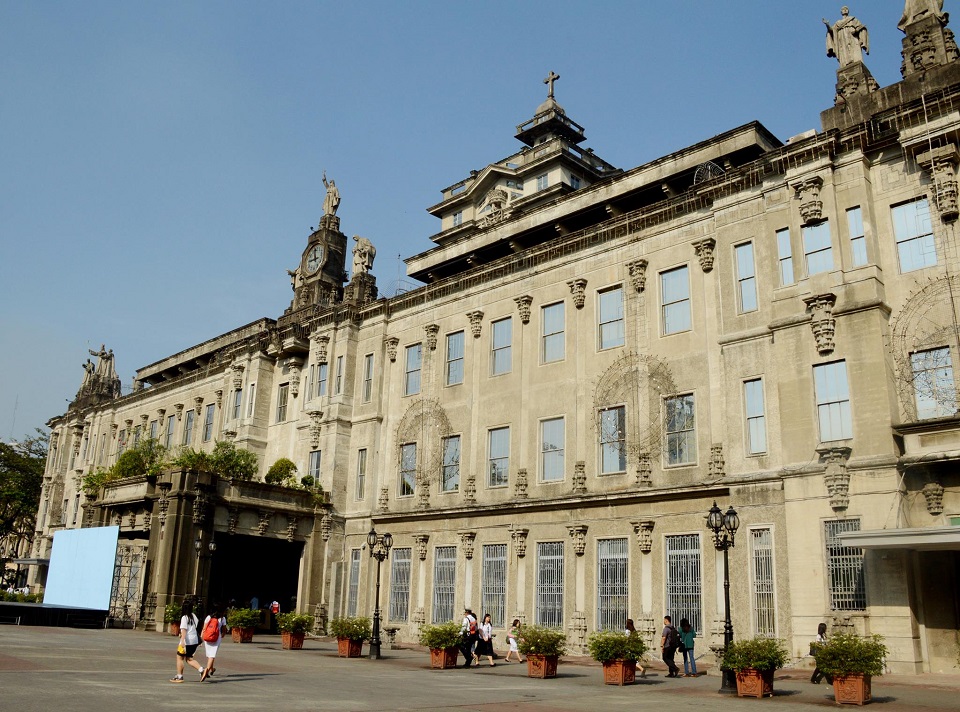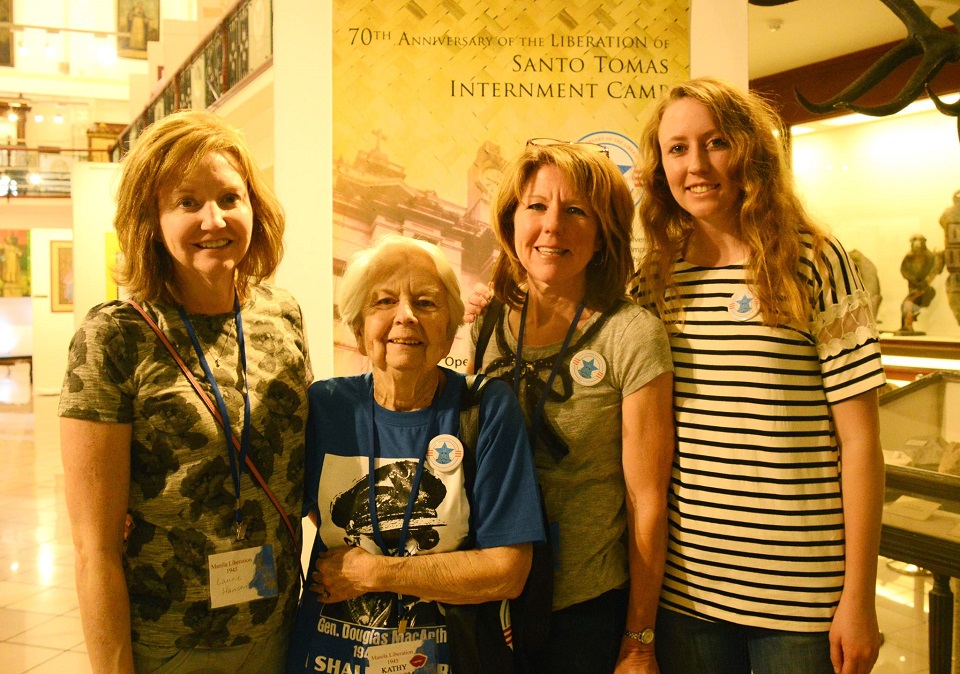Filtered by: Lifestyle
Lifestyle
Survivors return to PHL 70 years after liberation from UST prison camp
By VERONICA PULUMBARIT

From 1942 to 1945, the Japanese turned the University of Santo Tomas campus into a prison camp for American and British civilians. One of the buildings used by the internees was the main building. The law department's auditorium became the kitchen, while children studied on the second floor, which is now a museum. Photos by Riz Pulumbarit
Cronquist was one of the former prisoners of war who visited UST on Tuesday, exactly 70 years since Filipino and American forces liberated the Santo Tomas Internment Camp (STIC) on February 3, 1945.
That day signaled the start of the infamous Battle of Manila that lasted from February 3 to March 3, 1945. It devastated the city and led to the deaths of an estimated 100,000 civilian residents, but ended with the liberation of Manila.
Cronquist told GMA News Online that she was only six years old at the time of their internment. An only child, she lived with her parents in a shanty built by her father inside the UST campus—a far cry from the stylish art deco Syquia apartment in the heart of Manila they called home before the war began.
Before the war, Manila was one of the most beautiful and most prosperous cities in Asia. Historians at the commemoration of the 70th anniversary of the liberation of STIC recalled that the people of Manila were known for their honesty and integrity.
There were no security guards in the city because there was no robbery, kidnapping, or any major crime.
However, when the war began, everything changed.
For Cronquist’s family and the American and British people who were forced to live inside the STIC, food at the camp was scarce and there was constant threat of dying either from starvation, illness, or at the hands of the Japanese.
And by many accounts, life was even more difficult outside the STIC.
An exhibit at the university commemorating the period included letters from internees pleading with Japanese officials to let their families live with them inside the camp because outside, people were dying from hunger.

Kathy Elfstrom Cronquist (second from left) flew in for the celebration of the 70th anniversary of the liberation of the Santo Tomas Internment Camp (STIC). She was only six years old when she and her parents were interned in 1942, and nine when UST was liberated from the Japanese.
Camote during the war had risen to P200 per kilogram, while a piece of pandesal cost P55, a banana P10, and every egg P10, Jose said.
People at that time were joking that soon, peanuts would also be sold per piece, he added.
Most restaurants had to close; those that remained open offered meat from dubious sources. Jose said people suspected that the meat included dog, cat, and even rat.
Transportation became extremely difficult too because the Japanese seized “anything with wheels,” including bicycles and pushcarts, Jose said.
The once gracious Manileños turned to looting for survival. Jose said streets became dark because people began stealing even the copper from electric wires. “Where there is darkness, there is looting,” he said.
People were dying in large numbers. At one point in December 1944, just months before the liberation of the UST prison camp, 115 people died in one small district of Manila, Jose said.
The population of Manila also swelled abnormally from 600,000 to one million because people in nearby provinces believed that it was safer in Manila, declared an open city during the war.
Liberation of the UST prison camp
The liberation of the UST prison camp was orchestrated by General Douglas MacArthur, commander of the United States Army Forces in the Far East (USAFFE) and former Chief of Staff of the US Army.
The US had ordered MacArthur to leave the country in 1942 when the Japanese tightened its grip on the country. But he kept his promise to return in October 1944, while the war was still raging.
The liberation of the UST prison camp came a few months after MacArthur's historic landing in Palo, Leyte.
In a speech during the commemoration of the 70th anniversary of the liberation of the UST prison camp on Tuesday, James Zobel, executive director of the MacArthur Library in Virginia, said the general was determined to save the civilians imprisoned by the occupiers.
Zobel said MacArthur considered the liberation of the American and British civilian prisoners of war at UST his greatest moment during the Second World War.
For MacArthur, Manila was “home” and he personally knew the prisoners of war at the UST camp, Zobel recalled.
Cronquist said MacArthur’s arrival at UST on that fateful day in February 70 years ago was the most memorable moment for her.
There was great rejoicing at the camp, where many people had been on the brink of death due to severe hunger. People of different nationalities sang “God Bless America” together.
However, for many of those freed from STIC, things became harder as the Battle of Manila raged for an entire month, becoming one of the bloodiest battles of the war, and buildings were levelled due to shelling initiated by the American army.
The Japanese army, for its part, burned buildings, houses, and even hospitals, and strafed people trying to escape with machine gun fire. Even the US army sustained a huge loss as almost half of Manila’s defenders were killed.
After the war, Philippine officials pardoned those who committed atrocities during the war, perhaps out of Christian duty. However, historians said, while Filipinos may forgive, they should never forget what happened.
Jose said it is important for everyone to remember the hardships and atrocities of war so that we can learn from the past and seek peace instead. — BM, GMA News
Find out your candidates' profile
Find the latest news
Find out individual candidate platforms
Choose your candidates and print out your selection.
Voter Demographics
More Videos
Most Popular





